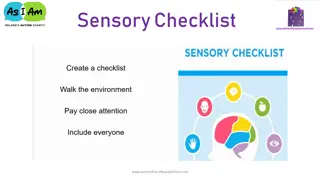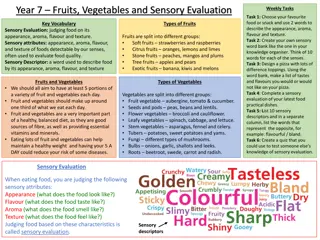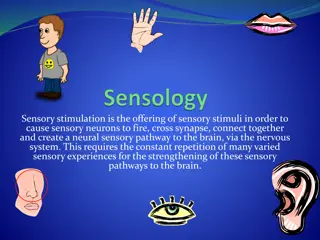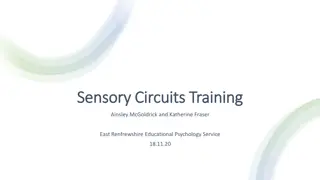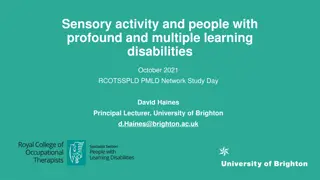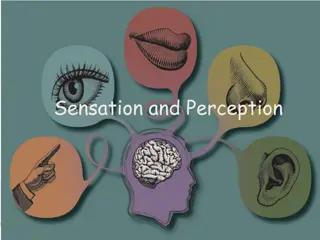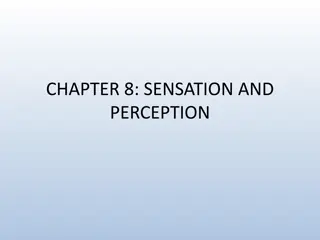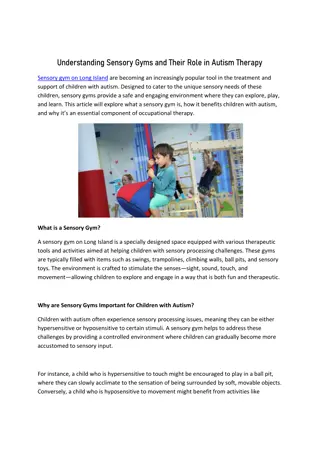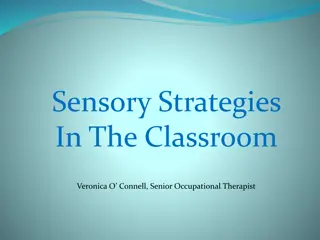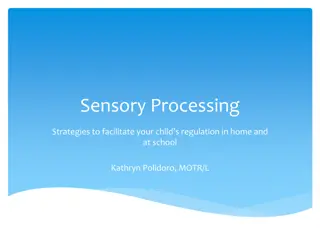Sensory Activity Ideas for Home Engagement
Explore engaging sensory activities for children at home, such as playing with bubbles, ripping paper, baking, creating bubble snakes, pouring water, ice treasure excavation, blow painting, and having fun with shaving foam. These activities stimulate the senses and provide opportunities for creativity and learning in a fun and interactive way.
Download Presentation

Please find below an Image/Link to download the presentation.
The content on the website is provided AS IS for your information and personal use only. It may not be sold, licensed, or shared on other websites without obtaining consent from the author. Download presentation by click this link. If you encounter any issues during the download, it is possible that the publisher has removed the file from their server.
E N D
Presentation Transcript
BOTHWELLPARK HIGH At Home Sensory Ideas
PLAY WITH BUBBLES IN THE SINK (add a hand whisk for extra points!) You can also do this in the bath or garden. You could hide different bottle tops in the bubbles and play search for the red bottle tops. Continue with other colours. It could lead onto doing dishes!
RIPPING PAPER Give them a nice pile of paper to rip to their hearts content. Try mixing up the types of paper. You can introduce sticking too by using a glue stick to turn the ripped up paper into a picture.
BAKING! Any kind of cooking or baking is a sensory experience as well as a practical life one. So, dust off the old cook book and get your aprons on, the best bit about this you get to eat your had work at the end!
BUBBLE SNAKES This is incredibly easy to make. Cut the bottom off a small bottle then either pull a sock or cut a piece of sock to cover the bottom, hold it in place with tape. To make the snakes use washing up liquid and a bit of water in a bowl, dip in the blower and blow... and then collapse into a fit of giggles.
POURING WATER You could do this in a basin, sink, outside or in the bath. The best idea is to start off with a small amount of liquid. Use two small jugs or bottles and show the child how to pour from one to another. When they have mastered that use a clear glass and get them to practice pouring until the line. Add a few drops of food colour to make it easier.
ICE TREASURE Get a plastic tupperware style box or similar and search the house for 'treasure' ours included plastic animals, beads, buttons, coins and other plastic toys. Put a few bits of treasure in the box and fill with water about 1/3 of the box. Pop into the freezer. When that layer has frozen, add another layer of treasure and freeze again. Add a final layer and freeze. Then when you get it out give your child the block and tell them to get the treasure. This usually involves several experiments of the best way to get the treasure out.
BLOW PAINTING Use a straw to move paint on a paper.
SHAVING FOAM FUN.... There are lots of ways you can use shaving cream, from just playing to writing letters in it, you could add some food colouring for colour.
TASTE TESTING Set up samples of different food in an ice- cube tray. You could just use a plate and maybe cocktail sticks as well. For each one your child could decide if they like it or not and create a record of likes and dislikes by drawing a picture under like/dislike headings. To make it more complicated you could try "sweet", "sour", salty" and "spicy
MYSTERY BAG What you need to play the Mystery Bag Game A bag Several objects of different shapes, sized and textures. To play, one of you puts a secret object into the bag. The guesser then puts their hand into the bag without looking and feels the object and tries to guess what is inside. Model descriptive vocabulary... "It's smooth, one end is spikey, it's cold... it feels like a hedgehog..." This will help your child to learn how to describe things too. Take it in turns and the great thing is this can be played with any age, get the grandparents and big brothers and sister playing too!
SHADOW PLAY Use your hands to make shadows. Here is a quick video to learn some basics: https://www.youtube.com/watch?v=Kz8wP2RYy64&feature =emb_logo
MAKE SHAKERS Get out the recycling bin and make some maracas, put some rice or dried beans inside a tube or a couple of containers and tape them shut, now time to get your groove on (OK I know this isn t the quietest of activities but it is a great way to burn off some energy if you can t leave the house). You could even decorate your bottle or container.
CLEANING Give your child a cloth to hold, or a duster, maybe with some polish sprayed onto it for them to smell. Hoovering Let them hold the tube to the hoover whilst you turn it on and off. Encourage them to help turn it on and off. Let them feel the suction on their hand or clothes. Making the beds Waft a sheet over their heads like a parachute, ask them to make choices about colours of duvet to put on the bed. Turn the lights off and close the curtains, make the room dark. Maybe read a book by torchlight whilst you re there.
TORCH Torches are fun to use and are interesting for children to hold and investigate, whether it be to shine on themselves or to track across other surfaces or walls in a darkened room.
MUSIC Listen to music on the radio, TV, on a CD, on a computer or a tablet. It could be a song that you always sing together. Your child may have favourite songs or theme tunes from the TV that they love to listen to repeatedly. Find a different radio station that you don t usually listen to, maybe classical music, jazz music, opera or rock music. Dance to it, move in different ways. Practise standing up and sitting down when the music starts and stops.







